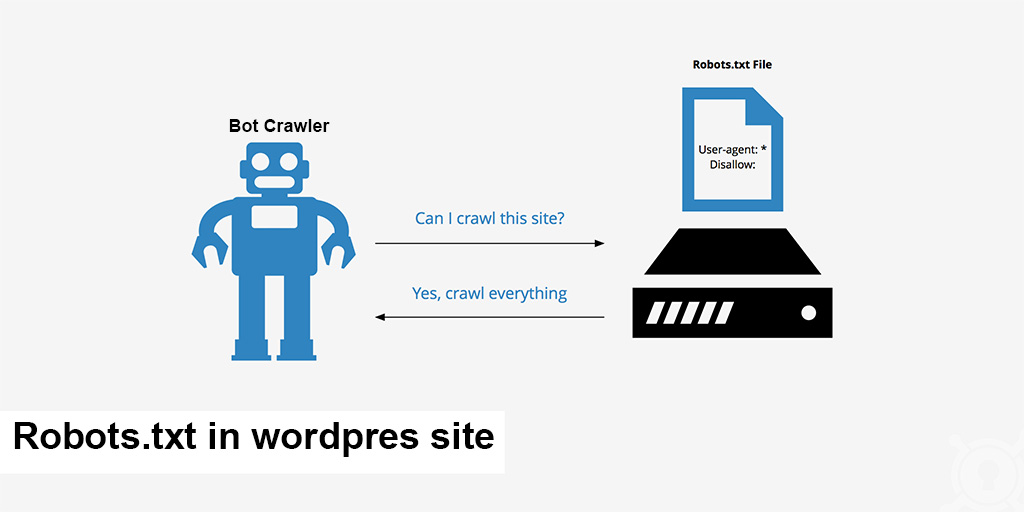If you’re using macOS and often find yourself creating new text files manually, here’s a quick tip to add a convenient button directly to the Finder toolbar. Step 1: Create the “New Text File” Action with Automator This script creates a new file named untitled.txt in your currently opened Finder folder. Step 2: Add the […]
Latest
In this tutorial, we’ll explore various methods to obtain the current date and time in Node.js applications. Node.js utilizes the JavaScript Date object, which is built-in and requires no additional module imports. We’ll cover how to retrieve the current date, month, year, hour, minutes, and seconds, as well as formatting options like YYYY-MM-DD hh:mm:ss, YYYY-MM-DD, […]
XPath is a powerful query language designed to navigate and select elements within XML or HTML documents. In JavaScript, the document.evaluate() method allows you to execute XPath queries to select elements from an HTML document efficiently. Selecting an Element by ID Using XPath in JavaScript Below is an example of how to use XPath in […]
We’ve all experienced it: you’ve SSH-ed into a server and started a long-running task. Unexpectedly, it’s taking much longer than anticipated, and now you can’t close your laptop without interrupting the process. Fortunately, there’s a simple solution to close the terminal window without killing the ongoing task. Quick and Easy Method Follow these steps to […]
Have you ever needed to search your database for specific text, but HTML tags got in the way? Here’s a nifty MySQL query that solves this problem: This query uses REGEXP_REPLACE to strip out HTML tags before performing the search. Let’s break it down: This approach allows you to search your content as if it […]
Introduction to XPath Hey there! Let’s talk about XPath, a powerful tool for web scraping. XPath is a language that helps you navigate through XML and HTML documents. It’s especially useful when you’re using Scrapy, a popular web scraping framework. Why use XPath? The Basics Imagine HTML as a tree. The root isn’t part of […]
Hey there, fellow TypeScript enthusiasts! Today, I want to share something that often confuses newcomers to TypeScript: working with global variables. Don’t worry, I’ve been there too, and I’m here to help you to make global variables in Node.js using TypeScript and make sure the types are correct. Prerequisites: VSCode and TypeScript should be already installed. Let’s start […]
How can you undo an accidental merge in a local repository that has not yet been pushed to the remote? The Solution If the Merge Has Not Been Committed If the merge has not been committed (i.e., git merge was run without the –commit flag and git commit has not been executed since the merge), […]
How can you undo local changes in a Git repository and return it to its initial state after cloning from a remote repository? The Solution If you later decide you want to reapply the stashed changes, you can use: Adjust HEAD~1 to the appropriate commit you want to revert to. For example, HEAD~2 for the […]
How can you squash multiple previous commits together into a single commit in a Git repository? You can squash multiple previous commits into a single commit using git reset and git merge –squash. Here’s how to do it: Detailed Steps and Commands Summary By following these steps, you can effectively squash multiple commits into a […]
The Problem When performing Git operations over HTTPS, you can embed the username and password directly into the URL. However, this method does not work for SSH URLs. How can you provide authentication details for SSH Git remotes? The Solution For SSH Git remotes, the authentication is handled differently compared to HTTPS. Most modern Git […]
What is the difference between git pull and git fetch? git fetch git pull Detailed Differences git fetch git pull Summary By understanding the differences between git fetch and git pull, you can better manage how and when you integrate changes from a remote repository into your local work.
The Problem How can you delete a commit from your branch history in Git? The Solution You can delete one or more recent commits from the current branch in a local repository using the git reset command. If the commit has already been pushed to a remote repository, you’ll need to force-push the changes to […]
Cron, the time-based job scheduler in Unix-like operating systems, is a powerful tool for automating repetitive tasks. From system maintenance to data backups, cron jobs play a crucial role in keeping Linux systems running smoothly. This guide will walk you through various methods to list and review cron jobs, helping you maintain better control over […]
Cron jobs are automated tasks executed at specified intervals in Unix-like operating systems. These tasks can be scheduled to run by minute, hour, day of the month, month, day of the week, or any combination thereof. They’re invaluable for system maintenance and administration tasks such as database backups, security updates, disk space checks, and email […]
Introduction to Cron Cron is a powerful scheduling daemon in Linux that executes tasks at specified intervals. These tasks, known as cron jobs, are essential for automating system maintenance and administration tasks. Understanding Crontab Crontab (cron table) is a configuration file that defines scheduled jobs. There are two types: Crontab Syntax The basic syntax for […]
Renaming files is a fundamental task in Linux, whether you’re organizing your personal documents or managing server data. While renaming a single file is straightforward, batch renaming can be more challenging. This guide will walk you through using the mv and rename commands to efficiently manage file names in Linux. The mv Command: Simple and […]
The mv command is a powerful tool in Linux for moving and renaming files and directories. This guide will walk you through its usage and options to help you manage your files efficiently. Basic Syntax The basic syntax of the mv command is: Common Use Cases Note: If dir2 exists, dir1 will be moved inside […]
Renaming files is a fundamental task in Linux systems. While it’s straightforward for single files, batch renaming can be challenging, especially for newcomers. This guide will walk you through using the mv and rename commands to efficiently manage file names in Linux. The mv Command: Basic File Renaming The mv (move) command is versatile, used […]
Introduction to XPath Hey there! Let’s talk about XPath, a powerful tool for web scraping. XPath is a language that helps you navigate through XML and HTML documents. It’s especially useful when you’re using Scrapy, a popular web scraping framework. Why use XPath? The Basics Imagine HTML as a tree. The root isn’t part of […]
If you prefer not to update the Tailwind CSS configuration, you can use JIT mode to apply the following styles directly: Alternatively, to use classes like shadow-red-500, you can do this: Why No Official Support? 🤷♂️ Currently, Tailwind CSS does not officially support text-shadow classes. Adam Wathan, the creator of Tailwind CSS, recently tweeted: “What […]
While paywalled content often faces criticism, content creators have the right to safeguard their work. If you’ve decided to implement a paywall, there are several techniques to deter unauthorized access and prevent content theft. Here are some effective methods: By implementing these techniques, you can create additional barriers against unauthorized access to your paywalled content. […]
In web development, there are times when you might want to prevent users from selecting text on your webpage. This can be useful in cases where you want to protect the content from being copied or to enhance the user experience by preventing accidental text selection during interactions. Fortunately, CSS provides a simple way to […]
CSS provides several units to define the size of an element relative to the viewport. The most commonly used units are vh and vw. However, there are other viewport-relative units such as dvh, dvw, svh, svw, lvh, and lvw. These units are used to define the size of an element relative to the dynamic viewport, […]
In this article, we’ll look in detail at four handy length units that are relative to the browser viewport: vh, vw, vmin and vmax. These are truly “responsive length units” in the sense that their value changes every time the browser resizes, and they introduce incredibly useful options for sizing elements in CSS.
This article explains the concepts of *args and **kwargs and how and when we use them in python program. Seasoned python developers embrace the flexibility it provides when creating functions. If you are beginner in python, you might not have heard it before. After completion of this tutorial, you will have confidence to use them […]
This tutorial outlines object oriented programming (OOP) in Python with examples. It is a step by step guide which was designed for people who have no programming experience. Object Oriented Programming is popular and available in other programming languages besides Python which are Java, C++, PHP. What is Object Oriented Programming? In object-oriented programming (OOP), […]
This tutorial outlines how to perform plotting and data visualization in python using Matplotlib library. The objective of this post is to get you familiar with the basics and advanced plotting functions of the library. It contains several examples which will give you hands-on experience in generating plots in python. What is Matplotlib? It is […]
In this tutorial, we will cover how dictionary comprehension works in Python. It includes various examples which would help you to learn the concept of dictionary comprehension and how it is used in real-world scenarios. What is Dictionary Comprehension? Like list comprehension, dictionary comprehension lets us to run for loop with a single line of […]
This tutorial covers how list comprehension works in Python. It includes many examples which would help you to familiarize the concept and you should be able to implement it in your live project at the end of this lesson. What is list comprehension? Python is an object oriented programming language. Almost everything in them is […]
This article covers detailed explanation of lambda function of Python. You will learn how to use it in real-world data scenarios with examples. Introduction : Lambda Function In non-technical language, lambda is an alternative way of defining function. You can define function inline using lambda. It means you can apply a function to some data […]
How to Handle Global Variables in TypeScript
Hey there, fellow developers! Today, I want to share something that tripped me up when I first started using TypeScript: dealing with global variables. Specifically, I’m going to show you how to work with global variables that are defined outside your TypeScript code. Let’s set the scene. Imagine you’re building a web app where you […]
Using relative paths in Vite builds
I have a simple project setup using Vite: I’m using Vite’s default configuration without a custom config file. After building the project, the index.html in the dist folder uses static paths for assets: This also affects url() paths in CSS, converting them to static paths. I want Vite to output relative paths instead, like this: […]
How to Use Robots.txt to Allow or Disallow Everything
The robots.txt file is an essential tool for managing how web crawlers interact with your site. Located at the root of your domain, this simple text file instructs search engine robots on which files and folders to avoid. What is the robots.txt File? Web crawlers, like Googlebot, are programs that visit your site and follow […]




